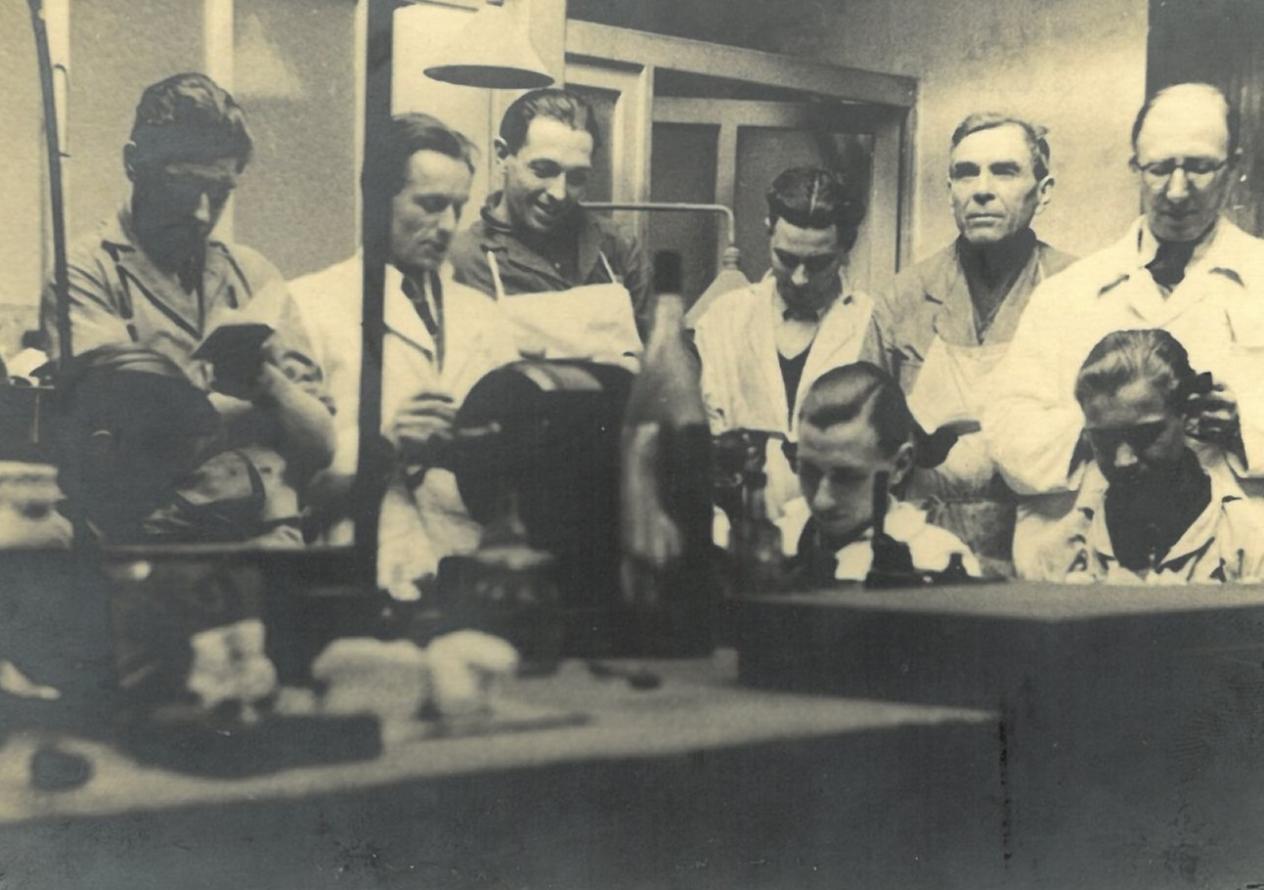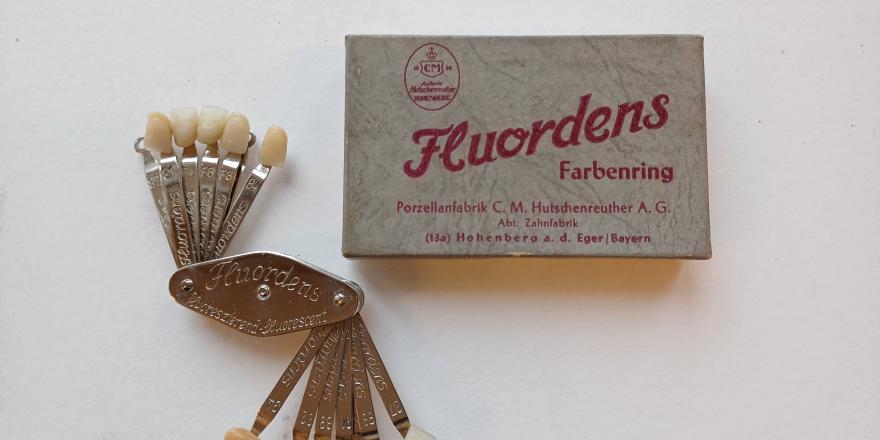For 2024, a dental heritage collection in the museum repositories was selected to be valued. Although a very brief basic record on paper had been performed for these objects, there was no knowledge within the MAS about the provenance and history of this collection. Therefore, it was not clear whether these objects had a place within the collection plan.
Provenance research
Preliminary archival research into provenance led to the discovery that the collection had been misidentified as coming from a dentist. The objects were part of the dental laboratory Vonck. This lab, located at Hemelstraat 17, was founded in 1922 by Jan Vonck and remained active until 1994. During this period there were several dental laboratories in Antwerp, but the special feature of Jan Vonck was the development of his own, internationally patented function prosthetic system in 1952, Sphaera V1 and V2. This self-invented and manufactured type of denture was to reduce patient pain through equal distribution of pressure across the patient's mouth and the ability to grind, bite and cut without denture tilt.
In 1972, an exhibition on the history of dental technology was organized at the laboratory in honor of its 50th anniversary. Most likely, the company then appeared on the radar of Wilfried Van Nespen, then curator of the Volkskundemuseum. In 1977, some of the contents were offered for sale by Wilfried Vonck, Jan's son. The removal of these objects had to be done very quickly due to renovations to the dental laboratory so they were not inventoried at the time of transfer. This would be done at a later stage with the help of Wilfried Vonck. Due to the confluence of the death of Wilfried Van Nespen and a financial dispute with Wilfried Vonck, this would ultimately not happen. As a result, knowledge of the collection's provenance disappeared over the years.
Register and value
Thanks to this preliminary research, it was possible to correctly register and photograph the objects using dental publications. This registration process took several months and eventually 412 objects were registered in the collection management system. In total the collection has more objects, but some items were registered in bulk, one number could be a collection of loose artificial teeth for example.
Once registration was complete, work could be done on valuing the collection. Here no financial value is assigned to objects, but together with experts we looked at the cultural value of these objects and collection as a whole within different frameworks, namely those of dental heritage and the MAS collection plan. Using a valuation form with substantive questions, each object was discussed individually with experts to determine their cultural-historical, socio-social and utilitarian value in addition to characteristics such as condition and ensemble value.
Thanks to contacts with the Union of Dental Technicians and a mutual collaboration with Histaruz, the heritage collection of UZ Leuven, we found two experts from the dental field. Sven Tirions is an active dental technician in Aarschot, Ludovic Beckers was a dental technician at KU Leuven and a volunteer at Histaruz. In addition, Lieselot Cornelis participated for ETWIE, the expertise cell for Technical, Scientific and Industrial Heritage, that oversees the Medical Heritage network. The MAS was represented by Leen Beyers, head of the collections team.

Vonck dental lab staff in 1943 (Vonck family archive)
Report
In three sessions lasting a total of almost 8 hours, all 412 object numbers were discussed using the valuation form. In addition to the valuations formulated around each object, these discussions yielded a wealth of information about the history of the dental profession in Flanders and the use of materials and objects in dental laboratories. As a result, a qualitative interpretation of the valuation report was chosen in which the textual translation of the interviews provided space to secure additional stories and information.
This ultimately resulted in a 40-page report that captures both the company history and the valuation of the Vonck collection. Thanks to the Vonck family archives, we were able to enrich the report with photographs of the company in operation and other fine archival documents such as the international patents on the Sphaera V1 and V2.
The valuation study revealed two future tracks for the Vonck collection. Both scenarios start from a greatly reduced collection. Within the various object groups there are many duplicates and objects in poor condition. Moreover, the conclusion from the valuation report is clear, with the right selection of objects, the same story can be told about dental lab Vonck and dental technology in general. Then the choice remains whether this story will be told within the MAS or whether the choice will be made to reallocate the collection to a museum in which this story can be better told. This choice is currently being discussed internally based on the research results. (spring 2025)

Tooth color models for Fluordens brand porcelain artificial teeth


